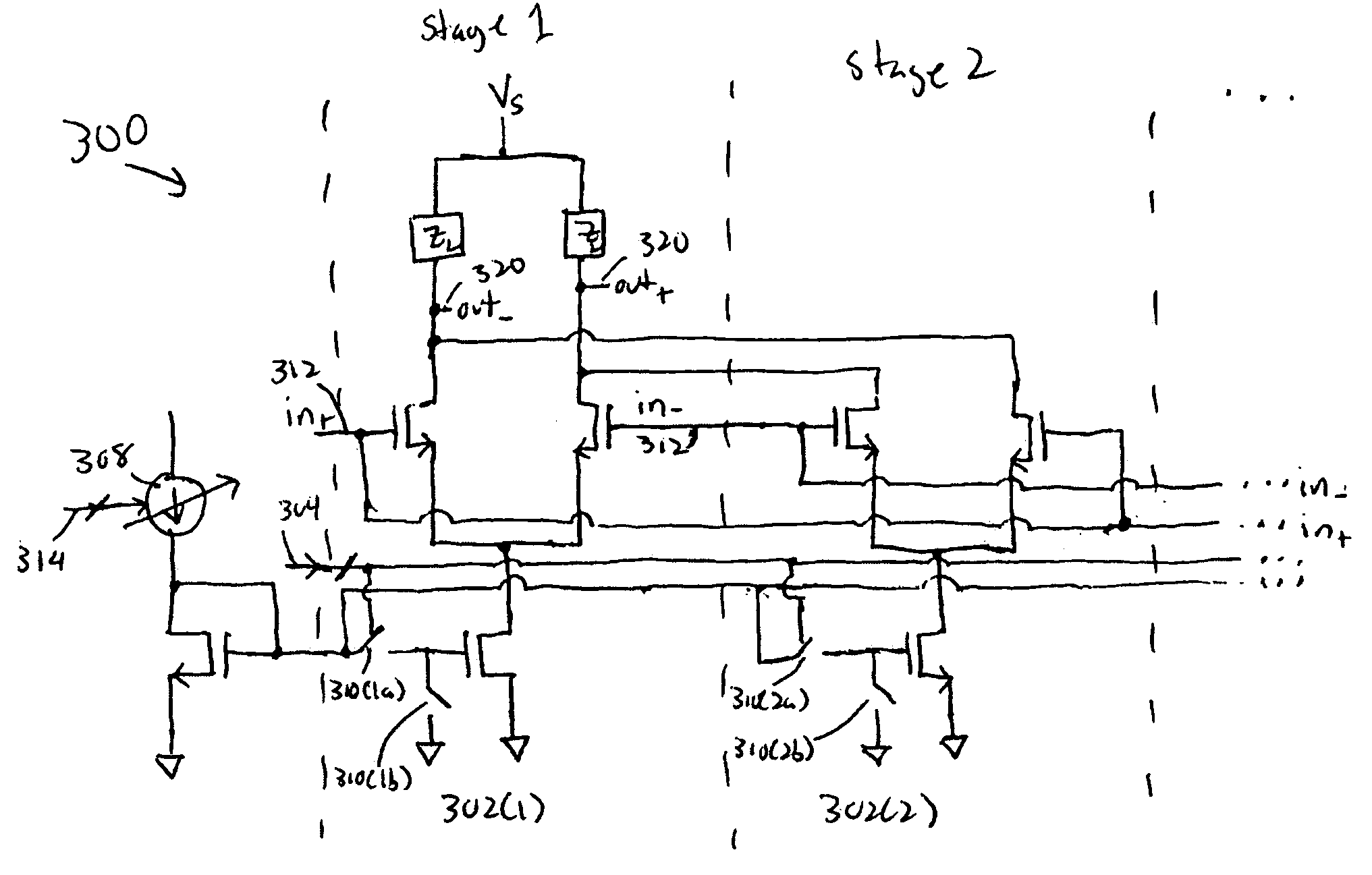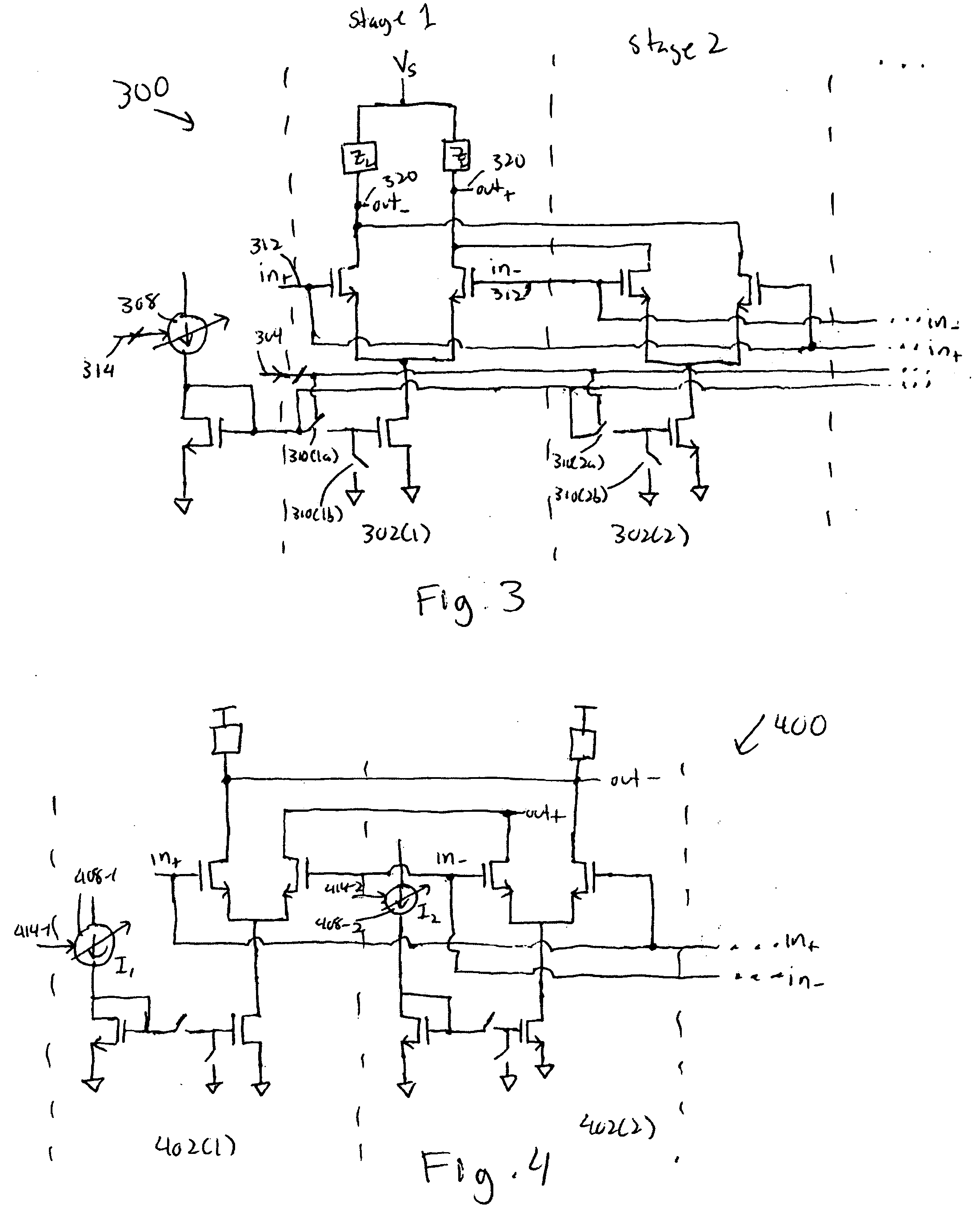Digitally controlled transconductance cell
a transconductance cell, digital control technology, applied in the direction of dc-amplifiers with dc-coupled stages, dc-amplifiers with semiconductor devices/discharge tubes, differential amplifiers, etc., can solve the problems of large overhead in power dissipation, change of linearity, and increase of power dissipation
- Summary
- Abstract
- Description
- Claims
- Application Information
AI Technical Summary
Benefits of technology
Problems solved by technology
Method used
Image
Examples
Embodiment Construction
[0020] According to one aspect of the invention, a transconductance cell includes two variable sized transistors, a variable bias current source coupled to the sources of the two transistors, and two resistive load elements coupled to respective drains of the two transistors. The transconductance gm of the cell is varied by changing the size (or aspect ratio) of the transistors and the bias current. In one embodiment, the load elements may also be variable.
[0021]FIG. 2 shows a transconductance cell 200 according to one embodiment of the present invention. Transconductance cell 200 is formed with two transistors 202 and 204, such as N-channel MOS transistors (as shown) or P-channel MOS transistors. The drain of transistors 202 and 204 are each coupled to one terminal of a load element 206 and 208, with the other terminal coupled to a voltage source Vs. Load elements 206 and 208 may be any suitable load having a resistance RL or impedance ZL, as will be discussed below. The load may ...
PUM
 Login to View More
Login to View More Abstract
Description
Claims
Application Information
 Login to View More
Login to View More - R&D
- Intellectual Property
- Life Sciences
- Materials
- Tech Scout
- Unparalleled Data Quality
- Higher Quality Content
- 60% Fewer Hallucinations
Browse by: Latest US Patents, China's latest patents, Technical Efficacy Thesaurus, Application Domain, Technology Topic, Popular Technical Reports.
© 2025 PatSnap. All rights reserved.Legal|Privacy policy|Modern Slavery Act Transparency Statement|Sitemap|About US| Contact US: help@patsnap.com



